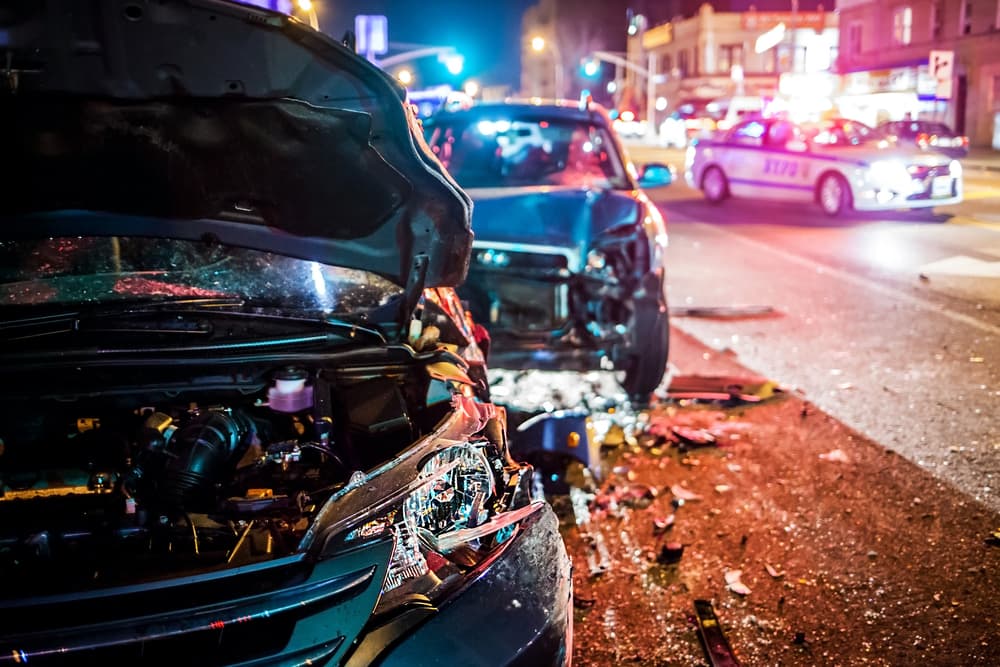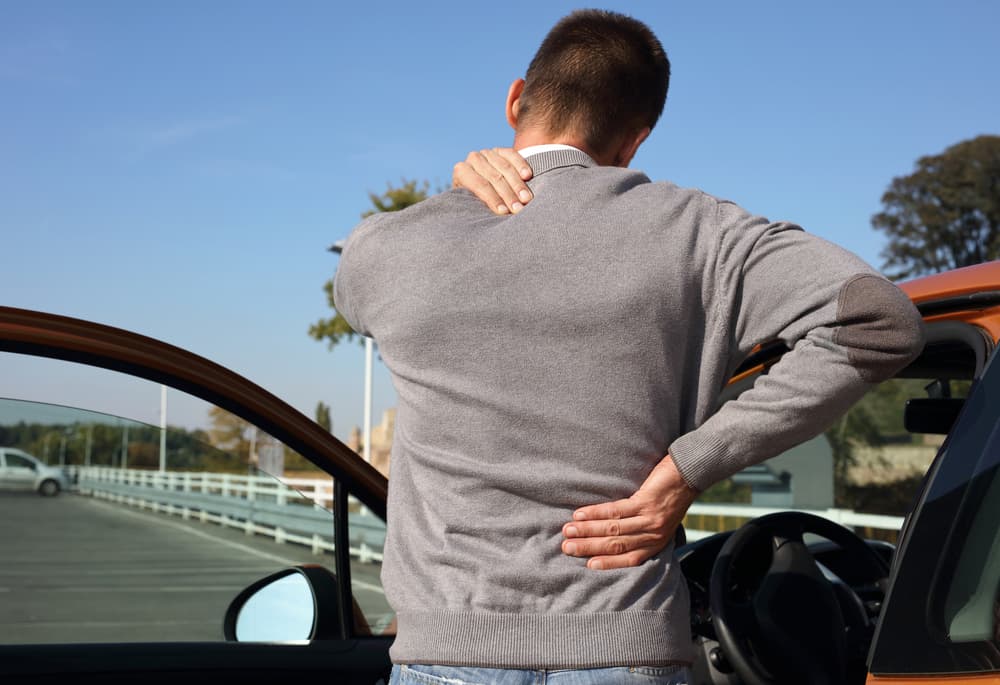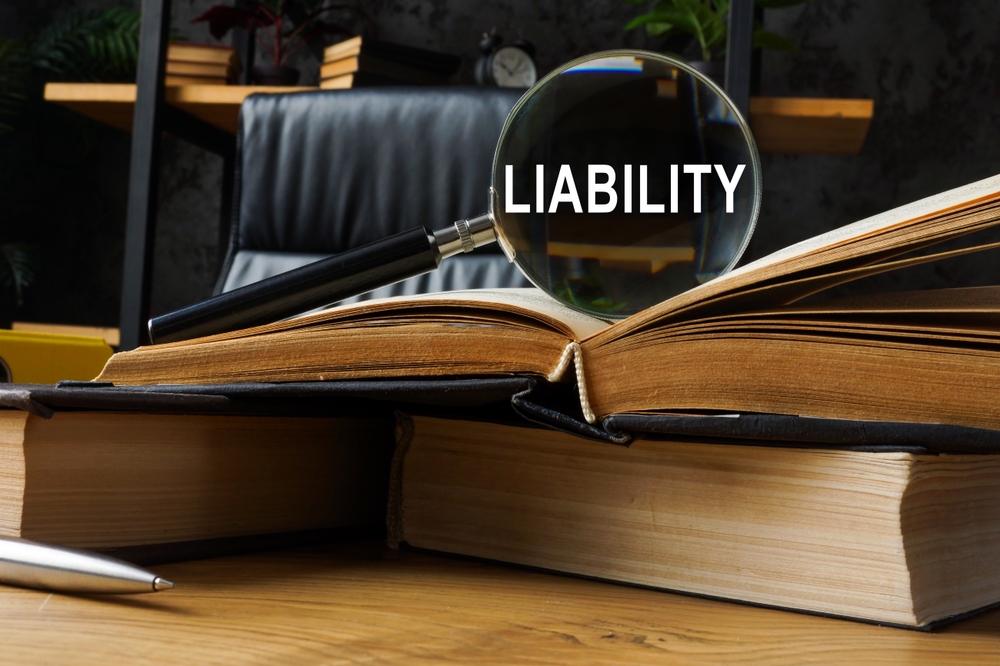
Car accidents frequently occur when other drivers violate traffic laws, such as by speeding, failing to yield the right-of-way, driving while intoxicated, or operating their vehicle while distracted. An experienced car accident attorney can gather the evidence necessary to prove liability in your case and help you recover the compensation you deserve for your losses.
Common Types of Car Accident Scenarios and How These Accidents Frequently Occur
The majority of car accidents happen when other drivers behave negligently under the circumstances. Another driver is negligent when they fail to act with the same care that a hypothetical “reasonable driver” would have exercised under similar circumstances.
Rear-End Collision

- One of the most frequent types of car accidents is a rear-end collision. This occurs when one vehicle crashes into the back of another. These accidents often result from tailgating, where a driver follows another car too closely. Distracted driving, such as texting or talking on the phone, can also lead to rear-end collisions because the driver is not paying enough attention to the road.
T-Bone or Side-Impact Collision
- Another common accident is the T-bone or side-impact collision, where the front of one vehicle hits the side of another. These accidents typically happen at traffic intersections when a driver runs a red light or stop sign. Failing to yield the right-of-way and speeding can also cause T-bone collisions. Such accidents may be severe due to the limited amount of protection on the sides of vehicles.
Head-on collisions
- Head-on collisions, although less common, are among the most dangerous. They occur when two vehicles traveling in opposite directions collide front-first. These accidents often result from drivers crossing the centerline of the road, which can happen due to drowsy driving, distraction, or impaired driving. Head-on collisions are particularly deadly due to the high-impact forces involved.
Sideswipe accidents
- Sideswipe accidents happen when two vehicles traveling in the same direction collide side to side. These accidents often occur during lane changes. A driver may fail to check their blind spots or signal their intentions, leading to a sideswipe. Negligence, such as not adjusting mirrors properly or being unaware of surrounding traffic, frequently plays a role in these accidents.
Single-vehicle accidents
- Single-vehicle accidents involve only one car and can result from various negligent behaviors. Speeding, distracted driving, and impaired driving are common causes. These accidents can include running off the road, hitting a stationary object, or rolling the vehicle. Poor road conditions and weather can exacerbate the risk, but driver behavior is often a primary factor. In these accident scenarios, injured passengers can file a claim for compensation with the at-fault driver’s insurance company.
Many car accidents result from the negligence of other drivers. If you suffered injuries in one of these types of accidents, an experienced car accident lawyer can handle every step of your case, file an insurance claim on your behalf, and gather the documents necessary to support your claim.
Legally Proving Fault for a Car Accident
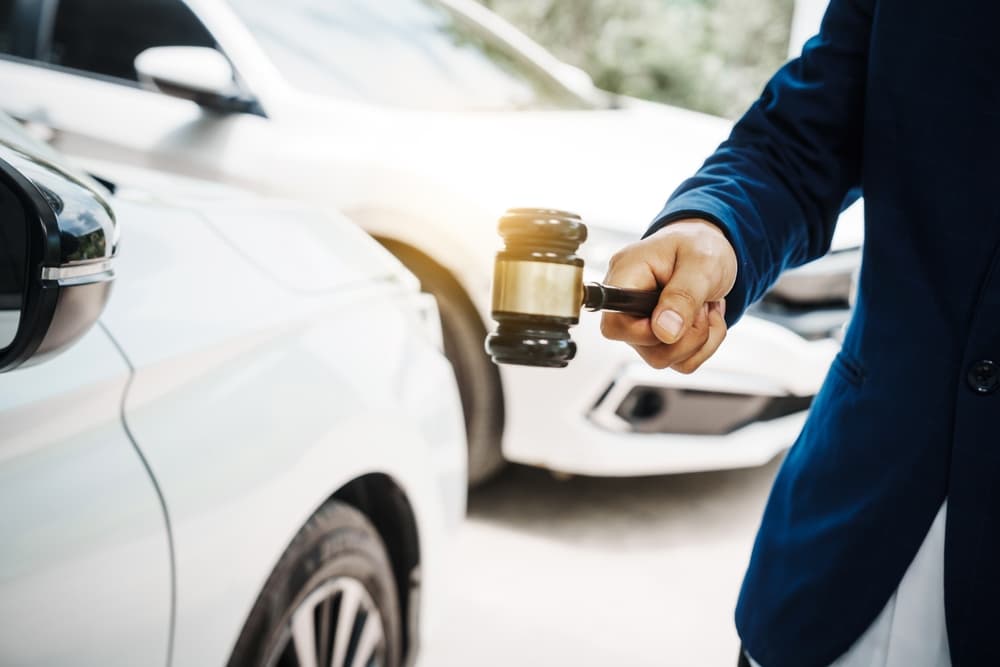
Legally proving fault for a car accident requires gathering and presenting convincing evidence to show that another party’s negligence caused the crash. There are several key elements and types of evidence that can help to establish fault.
- The first element is a duty of care. Every driver has a legal responsibility to drive safely and follow all traffic laws. Proving this element is usually straightforward, as it is generally accepted that all drivers owe this duty to others on the road.
- The second element is a breach of duty. To prove fault, you must show that the other driver breached their duty of care. This means demonstrating that they acted in a way that a reasonably careful driver would not have acted. Common breaches include speeding, running a red light, or driving under the influence of alcohol or drugs.
- The third element is causation. The victim must show that the other driver’s breach of duty directly caused the accident. This involves linking their negligent behavior to the resulting collision and any injuries or damages.
- The fourth element is damages. You must prove that the accident caused actual harm, whether it’s physical injuries, property damage, or financial losses.
To support these elements, various types of evidence can be introduced:
- Police Reports – After an accident, police usually create a report detailing the incident. These reports often include the officer’s observations, statements from involved parties and witnesses, and sometimes the officer’s opinion on who was at fault. While not always admissible as evidence in court, police reports can provide a strong foundation for proving fault.
- Witness Testimony – Statements from people who saw the accident can be crucial. Witnesses may provide an objective account of what happened, supporting your claim about the other driver’s negligence.
- Photographs and Videos – Visual evidence from the accident scene, such as photos of vehicle damage, road conditions, and skid marks, can help recreate the incident. Traffic camera footage or dashcam videos can also be valuable.
- Medical Records – If you suffered an injury in the accident, medical records can establish the extent of your injuries and link them to the collision. These records can demonstrate the damages you suffered as a result of the other driver’s negligence.
- Expert Testimony – Accident reconstruction experts can analyze evidence from the scene to provide an expert opinion on how the accident occurred and who was at fault.
By gathering and presenting these types of evidence, you can build a strong case to prove the other driver’s fault in a car accident. This legal process helps to ensure that responsible parties are held accountable and victims receive the compensation they deserve.
What if the Insurance Company Denies Fault for a Car Accident?
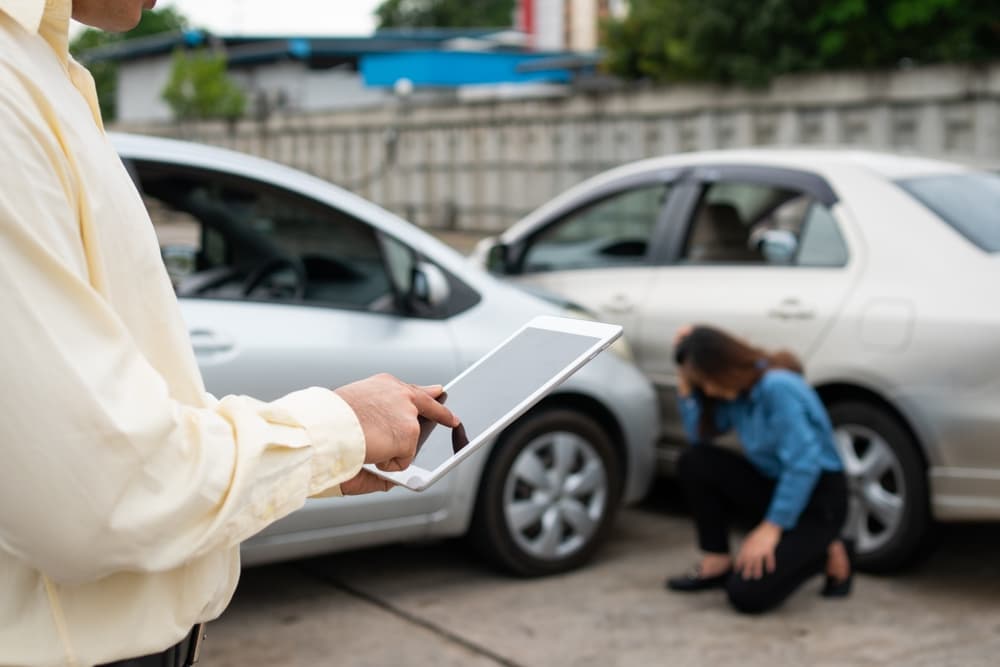
If the at-fault driver’s insurance company denies fault for a car accident, you still have several options to pursue compensation for your damages and injuries.
- Review the Denial – Start by carefully reviewing the denial letter from the insurance company. Understanding the insurance company’s reasons for denying your claim can help you address any issues or provide additional evidence to support your case.
- Gather More Evidence – Strengthen your claim by collecting more evidence. This can include obtaining additional witness statements, acquiring more detailed photos or videos of the accident scene, or getting a copy of the police report if you don’t already have it. Sometimes, the new evidence can persuade the insurance company to reconsider its decision.
- Consult with an Experienced Car Accident Attorney – Hiring a car accident lawyer can be beneficial. An experienced car accident attorney can provide legal advice, negotiate with the insurance company on your behalf, and gather and present evidence more effectively. They can also help you understand your rights and the best course of action for your case.
- File a Claim with Your Own Insurance – If you have collision coverage or uninsured/underinsured motorist coverage, you can file a claim with your own insurance company. Your insurer may then seek reimbursement from the at-fault driver’s insurer through a process called subrogation. While this can result in a deductible, you may recover some or all of it if your insurer is successful in their claim against the other company.
- Use State Insurance Department Resources – Contact your state’s insurance department for assistance. Many states have consumer protection services that can help mediate disputes between you and the insurance company. They can also provide guidance on state-specific laws and regulations that may be relevant to your case.
- Consider Arbitration or Mediation – Some insurance policies include arbitration or mediation clauses as alternatives to court. These methods involve a neutral third party who can help resolve the dispute more quickly and less expensively than a lawsuit.
- File a Lawsuit – If all else fails, you can file a lawsuit against the at-fault driver. This legal action can compel the insurance company to settle or pay for your damages if you win the case.
Navigating a denied car accident claim can be challenging, but by exploring these options, you can increase your chances of obtaining the compensation you deserve.
Deciding Whether to Settle a Car Accident Case or Take it to Court
Deciding whether to settle a car accident case or pursue litigation in court involves weighing several important factors. This decision can significantly affect the outcome of your case and your overall experience.
- Strength of the Evidence – One of the first factors to consider is the strength of the evidence supporting your claim. If you have clear, compelling evidence that the other driver was at fault and your damages are well-documented, you may have a strong case for litigation. However, if the evidence is weak or ambiguous, settling may be a safer option.
- Time and Expense – Litigation can be a lengthy and expensive process. Court cases can drag on for months or even years, requiring a substantial investment of time and money. Legal fees, court costs, and expert witness fees can add up quickly. On the other hand, settling a case can provide a quicker resolution and reduce legal expenses.
- Stress and Uncertainty – Taking a case to court can be stressful and unpredictable. The outcome is uncertain, as it ultimately depends on the judge or jury’s decision. This uncertainty can add to the emotional strain of the accident. Settling can offer a more predictable and controlled outcome, reducing stress and anxiety.
- Settlement Amount – Evaluate the settlement offer carefully. Insurance companies often try to settle for less than what you may ultimately receive in a court judgment. Compare the offer to your total damages, including medical expenses, lost income, property damage, and pain and suffering. If the settlement is fair and covers your damages, it may be worth accepting.
- Legal Advice – Consult with a skilled car accident attorney to get a professional opinion on your case. A knowledgeable car accident lawyer will assess the strengths and weaknesses of your case, estimate potential court awards, and negotiate better settlement terms. They can also advise you on the likelihood of winning in court and the potential risks involved.
- Personal Priorities – Consider your personal circumstances and priorities. If you need a quick resolution to cover immediate expenses or want to avoid the hassle of court, settling may be more appealing. However, if you are seeking full compensation and are willing to endure a longer process, litigation may be the better path.
Ultimately, deciding whether to settle or litigate a car accident case requires a careful evaluation of these factors. By considering the strength of your evidence, the potential costs and benefits, and your personal circumstances, you can make an informed decision that aligns with your best interests.
Recovering Compensation in a Car Crash Case
If you can prove that another driver caused your car accident, you may be entitled to recover various types of compensation for your losses – also known as damages. These damages are intended to make you whole again by covering the different ways in which the accident has affected your life.
- Medical Expenses – This is one of the most common types of compensation. It includes all costs related to your medical care following the accident, such as hospital stays, surgeries, doctor visits, prescription medications, physical therapy, and any future medical treatments you may need due to your injuries.
- Lost Wages – If the accident caused you to miss time from work, you can receive compensation for the income you lost. This includes not only your regular income but also any bonuses, commissions, and other benefits you may have missed. If your injuries result in a long-term or permanent inability to work, you can also pursue compensation for future lost earnings.
- Property Damage – You can recover the costs of repairing or replacing your vehicle and any other personal property damaged in the accident, such as electronics, clothing, or other items in your car at the time of the collision.
- Pain and Suffering – This type of non-economic compensation covers the physical pain and emotional distress resulting from your injuries and the accident itself. Unlike medical expenses or lost income, pain and suffering damages are more subjective and can vary significantly from case to case. Factors like the severity of your injuries, the effects on your daily life, and your recovery time are all important considerations when determining this amount.
- Loss of Consortium – If the accident has negatively affected your relationship with your spouse or family, you may be entitled to compensation for loss of consortium. This covers the loss of companionship, affection, and support resulting from the accident.
- Punitive Damages – In cases where the at-fault driver’s behavior was particularly reckless or malicious, the court may award punitive damages. These damages are meant to punish the wrongdoer and deter similar conduct in the future. Punitive damages are less common and are typically awarded in addition to compensatory damages.
- Miscellaneous Expenses – Other costs related to the car accident, such as transportation to medical appointments, home modifications if you are disabled, and the cost of hiring help for tasks you can no longer perform, can also be included in your compensation.
Call an Experienced Car Accident Lawyer Today

A skilled car accident attorney can gather the evidence necessary to prove the legal elements of your case, including liability and damages. Your personal injury lawyer will also offer you sound legal advice, represent you during all legal proceedings, and work to maximize the compensation you receive for your injuries.


